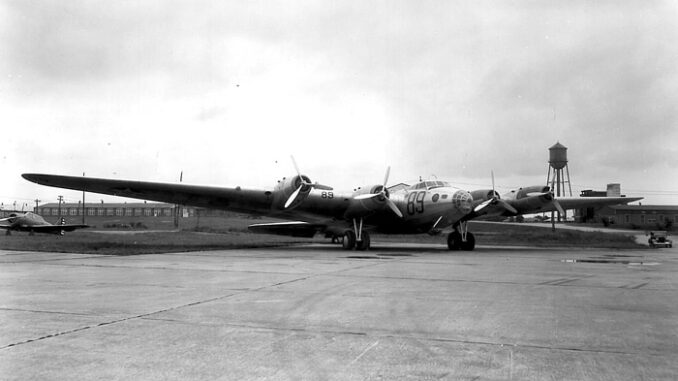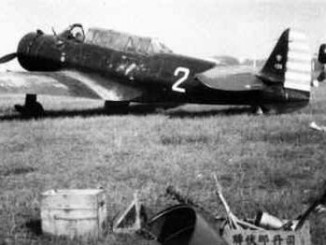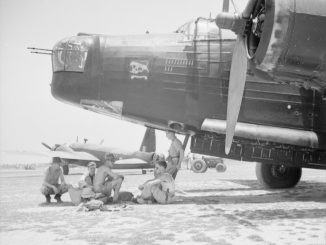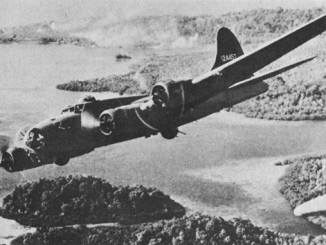
By the mid-1930s the US Army Air Corps (USAAC) saw the need for a new type of long-range bomber. The procurement of the Boeing B-9 and the Martin B-10 and B-12 series had filled an immediate need for medium bombers but advances in aviation technology suggested that a much larger machine capable of inter-continental flight might be feasible. In the early 1930s it was discovered that larger aircraft offered aerodynamic advantages, which coupled with other improvements such as retractable landing gear, controllable pitch and constant speed propellers, and the standardisation on monoplanes meant that a very large bomber could conceivably be constructed. As such, the USAAC initiated “Project A”, approaching both Boeing and Martin to design new aircraft.
On April 14, 1934 the USAAC issued a design request for a new bomber with a combat range of 5,000-miles carrying a 2,000lb bomb load. Boeing produced the Model 294, a large four-engine design which was subsequently designated XBLR-1. Douglas produced their Model 145 which was later designated XB-16. The Boeing design was considered superior and a contract was issued on June 29, 1935 for a single XBLR-1. In July 1936, the “BLR” line was eliminated and the aircraft was redesignated XB-15.
Design
The XB-15 was the largest and heaviest American aircraft ever built when it first flew in 1937. The most striking feature was the huge, broad wings which stretched out to give the aircraft a wingspan of 149ft. The wings were fitted with air brakes and de-icing boots, both recent innovations. The thickness of the wing allowed for crawlspaces that an engineer could use to reach the engine nacelles and carry out minor repairs whilst in flight. The same wing design would later be used on the Model 314 flying boat which carried passengers across the Pacific for Pan American Airways.
A large aircraft requires powerful engines and the XB-15 was originally designed with Allison’s experimental V-3420 in mind. This engine mated two V-1710s together to provide up to 2,600hp for takeoff. Allison struggled to make the huge engine work and they were not considered reliable enough for the XB-15 program. With the risk of project failure due to engine issues considered too high, the designers substituted instead the Pratt & Whitney R-1830-11, rated at just 850hp. Projected performance was naturally greatly reduced as a result.
The fuselage was mostly conventional with several turrets housing six defensive machine guns. There were several innovations for crew comfort – with combat missions expected to last up to 24 hours, living and sleeping quarters for the crew were provided aft of the bomb bay, and heating and ventilation was provided for the crew to keep them comfortable. An automatic pilot was included to ease the burden on the two pilots, and an improved SCR-186 radio compass was installed for the navigator. The XB-15 was the first aircraft to have two auxiliary engines for powering the onboard electrical systems, although these were notoriously unreliable.
Several other innovations were pondered but ultimately rejected for the design. Turbo-superchargers for the engines were considered as they might have resulted in increased power, but were rejected on the basis that too many problems around aerodynamics and propellors needed to be resolved for them to be worth it. Likewise tricycle landing gear was rejected in favour of double-trucked conventional main gear.
Construction took place in Boeing’s Seattle plant. The first flight of the XB-15 took place on 15 October 1937, more than 2 years after smaller and higher-priority XB-17 – this despite the fact that the XB-15 was ordered first. Boeing’s chief test pilot Edmund T. “Eddie” Allen was at the controls alongside USAAC Maj John D. Korkille. The aircraft performed adequately but the top speed was disappointing at less than 200mph. When carrying 2,500lb of bombs the top speed was reduced further to 145mph, which would have made it an easy target for modern fighters. It was clear that the design of the XB-15 was fundamentally flawed and as a result any further production of the type was abandoned.
The Army saw enough potential in the XB-15 to request a modernised version in June 1938, with the ungainly designation Y1B-20. This version was to have featured more powerful Pratt & Whitney R-2180 Twin Hornet engines, offering 1,400hp and a top speed that was anticipated to reach 240mph. The tricycle gear that was proposed for the XB-15 also would have featured. The Y1B-20 would have been slightly larger and heavier than the XB-15, with additional defensive armament. However with the XB-19 already on order and limited funds available for new bombers, there seemed little need for the Y1B-20 so the contracts were cancelled before any were built.
The XB-15 marked something of a dead-end for large bomber development. For an aircraft to meet the USAAC’s requirements it needed much more power which could not be provided by the engines of the day. Research indicated the need to greatly reduce drag, which in turn pointed to a thinner wing with a much higher wing-loading and a fuselage that was as aerodynamically clean as possible. Boeing would learn these lessons and apply them in a series of designs which culminated in the Model 345, which became the B-29 Superfortress.
Service
The sole XB-15 was accepted by the USAAC and delivered to Wright Field in December 1937. It was assigned to the 2nd Bomb Group for extended performance trials and was tested throughout 1938. When in January 1939 an earthquake struck Chillán, Chile, the XB-15 was sent on a humanitarian mission to ferry supplies for the Red Cross to the disaster area. The flight was commanded by Maj Caleb V. Haynes. The XB-15 flew from Langley Field via the Panama canal zone and Lima, Peru to the Chilean capital, Santiago. Haynes was later awarded the DFC for the mission and the crew was awarded the Mackay Trophy for carrying out the outstanding USAAC effort of the year.
A more sombre duty followed for the XB-15 in June 1939, when it was used to carry the body of famed Mexican aviator Francisco Sarabia home to Mexico City. Sarabia had just set a record for flying from Mexico City to New York in time for the 1939 World’s Fair. Sarabia visited Washington on his return trip, and it was here that disaster struck. Taking off from Bolling Field, Sarabia’s aircraft suffered engine failure and crashed into the Potomac River. Sarabia subsequently drowned and the XB-15 was drafted in to carry him to his final resting place. The XB-15 also later made an appearance at the World’s Fair, as a demonstration of American aeronautical engineering prowess.
The XB-15 was also used to set a number of world records for lift capacity and endurance. On July 30, 1939 the aircraft set its first record by lifting a cargo of 14,135kg (31,162lb) to over 2,000m (6,562ft) with pilot Haynes again at the controls (link). A few days later another record was set by the XB-15 when it carried a 2,000kg (4,409lb) payload over a closed 5,000km (3,107-mile) circuit, with an average speed of 267kmh (166mph) (link). Both were ratified as official Fédération Aéronautique Internationale (FAI) records that stood until they were broken in 1946 by a USAAF Boeing B-29 Superfortress.
In 1940 the XB-15 moved to Albrook Field near the Panama Canal. It was used in bombing tests against simulated canal facilities, demonstrating some of their weaknesses against bombing attacks. Capt Curtis LeMay, future commander of B-29 forces in the Pacific, was the navigator. A month later the XB-15 surveyed potential airfield locations in the Galapagos Islands, following which construction began on Baltra and Seymour Island airfields which were used extensively during the war years. Following these exploits the XB-15 returned to the US where its defensive armament was removed and additional seating added so that the aircraft could serve a transport for lend-lease crews returning from Europe.
When the war broke out the XB-15 was pressed into service as a troop transport. Eventually it was adapted for permanent non-combat operations, with all of the defensive armament removed and the bomb-bay reconfigured for carrying cargo with a hoist and cargo doors. The modified aircraft was redesignated XC-105, and thanks to its history as the first true American heavy bomber its crew dubbed it “Grandpappy”. Based again at Albrook Field on the Pacific side of the Panama Canal, the XC-105 regularly flew between Miami and bases across the Caribbean, as far afield as the Galapagos Islands, delivering over half-a-million pounds of cargo during its career.
By 1945 the reliability of the XB-15 was becoming a serious problem. The aircraft suffered two in-air fires and a complete loss of electrical power due to a failure of the auxiliary generators. Realising that the aircraft was beyond the point of economical repair, the decision was made to scrap the aircraft. In June the XB-15 was stripped of parts and broken up at Albrook Field, and its remains were later buried.




Leave a Reply